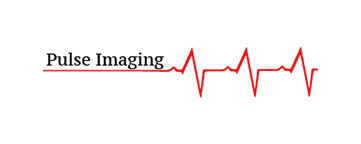Covid-19 PCR
Also Known As: SARS-COV-2 RNA Nucleic-Acid Amplification Test, SARS, Novel Coronavirus, NCOV, COVID19, Coronavirus
What Is SARS-Cov-2 RNA (COVID-19), Qualitative NAAT Test?
The SARS-CoV-2 RNA (COVID-19), Qualitative NAAT Test is a comparative, multi-target molecular diagnostic test that helps detect covid-19 in symptomatic patients. The aim or objective of this test is to be performed over respiratory specimens gathered from people who meet the requirements of CDC clinical and epidemiological criteria against coronavirus testing. NAAT or nucleic acid amplification test for SARS coronavirus can help detect nucleic acids or genetic material. It specifically helps identify the RNA sequences that make up the genetic material of coronavirus.
This method helps detect if a person has coronavirus even before they show any symptoms, allowing for premature isolation to prevent the spread of the infection.
The nucleic acid amplification test procedure works by strengthening or making multiple copies of the coronavirus genetic material present in an individual's sample. Increasing or amplifying the copies of nucleic acids allows the doctors to detect even the smallest amount of CoV-RNA in an affected person, making it a highly sensitive tool for diagnosing coronavirus.
When summarized, NAAT is a reliable source to detect small amounts of Novel coronavirus with no chances of returning a false negative result under any circumstance.
What Is The Test Used For?
Since the beginning of the coronavirus pandemic, the number of NAATs authorized to detect the virus has increased twofold. As a result, this test has been authorized for use in multiple settings, including laboratory facilities owned by trained laboratory personnel or POC (point of care) settings. This test is considered a rapid solution performed over the specimen to collect results within minutes. Because this laboratory-based test is among the most sensitive test for detecting the SARS-CoV-2 RNA (COVID-19), it can also be used to confirm the results of other lower sensitivity tests, including antigen tests.
For the most part, this test is performed to detect genetic material from the coronavirus specimen. It helps detect the presence of the virus or infection if you are infected at the time of the procedure. Apart from diagnosing covid-19, the test is also helpful in detecting fragments of virus in the body even when you are no longer infected or have already recovered from the disease. Due to this reason, the SARS-CoV-2 RNA (COVID-19), Qualitative NAAT Test has become a gold-standard test for diagnosing the coronavirus mostly because it is accurate and highly reliable.
Why And When Do You Need SARS-Cov-2 RNA (COVID-19), Qualitative NAAT Test?
A clinician typically uses SARS-CoV-2 RNA (COVID-19), a Qualitative NAAT Test, to diagnose any respiratory infection caused by the coronavirus. Using direct detection of viral nucleic acid and protein in respiratory tract specimens, your doctor can figure out if you have been infected with the virus before the symptoms start to appear. The NAAT test, in particular, is designed to catch viral RNA. A positive result is highly indicated for the presence of the viral nucleic acid, but unluckily it cannot differentiate among non-viable or viable viruses. Therefore, a positive test result does not necessarily mean that you are infectious and require early isolation.
According to the designated guidelines, you are eligible for the nucleic acid amplification test if:
- If you are a symptomatic individual suspected of having coronavirus
- If you are an asymptomatic individual with suspected or known contact with an already infected individual
- You are an asymptomatic patient when the test results arrive but have been in contact with a coronavirus patient
Some other recommendations involve:
- Nucleic acid amplification testing in people with symptoms even when clinical suspicion is low or moderate
- Nucleic acid amplification testing in asymptomatic individuals with suspected exposure to coronavirus, those who might need hospitalization when the community majority is high
- Repeating viral RNA test when the preliminary test is negative in an asymptomatic patient with a moderate or high level of clinical suspicion
What Kind Of Sample Is Required For The Test?
A NAAT test is performed in 3 steps. Almost all the test steps are performed in a facility or laboratory, and the test results are readily available within 1 to 2 days. For the nucleic acid amplification test, the laboratory assistant will swab the inside of your nose to collect the respiratory material. After collecting the specimen, they will see the swab and send it to a laboratory for testing. If you are infected with coronavirus, the virus will be present in your sample.
Do You Need To Prepare For The Test?
Whether you have symptoms or not, you must keep your mask on to avoid contact with infected individuals and avoid spreading the virus to healthy individuals. In addition, people undergoing nasal or oral swab tests may experience some fear and anxiety. Still, we suggest you stay as calm as possible and be more cooperative or compliant with the doctor for accurate results.
Are There Any Risks To This Test?
Doing a nasal test is a relatively safe and risk-free procedure. During the test, you might feel a little stinging or burning in your nasal passage, but these symptoms will disappear as soon as the nasal swab is out.
What Do The Test Results Mean?
The result interpretations for the nucleic acid amplification test includes:
- A detected result is considered positive for coronavirus. It indicates that the RNA from the sars-CoV-2 was present in the specimen and that the suspected patient is infected with the virus and presumed to be spreadable. If your doctor requires more tests, he can even send the specimen for additional testing.
- Unknown detected on negative test result show us that the SARS-CoV-2 RNA was not present in the specimen above the desired detection limitations. However, a negative test result does not rule out the possibility of coronavirus and should not be considered as the only basis against patient management decisions.
- An inconclusive test result indicates that not all the testing targets were detected in the specimen. It can happen due to viral concentrations near the detection limit, along with other factors. The doctor may ask for additional sample collection and testing when this happens.
Related Tests: COVID Antibody Test, CBC (complete blood count), OP Swab test (oropharyngeal), Combination OP/NP Swab Test
Frequently ordered together
CT Chest High Resolution without Contrast
X-Ray Chest PA And Lateral
X-Ray Chest PA
Covid-19 Antibody
D-DIMER QN
EKG
COVID-Flu
COVID-19 Shallow Nasal PCR Test Kit EXPRESS
COVID-19 Shallow Nasal PCR Test Kit STANDARD
COVID-Flu
CBC (HH-RBC-WBC-PLT)
530.00$
105.00$
150.00$
52.00$
48.00$
21.00$
123.00$
113.00$
94.00$
123.00$
16.00$














